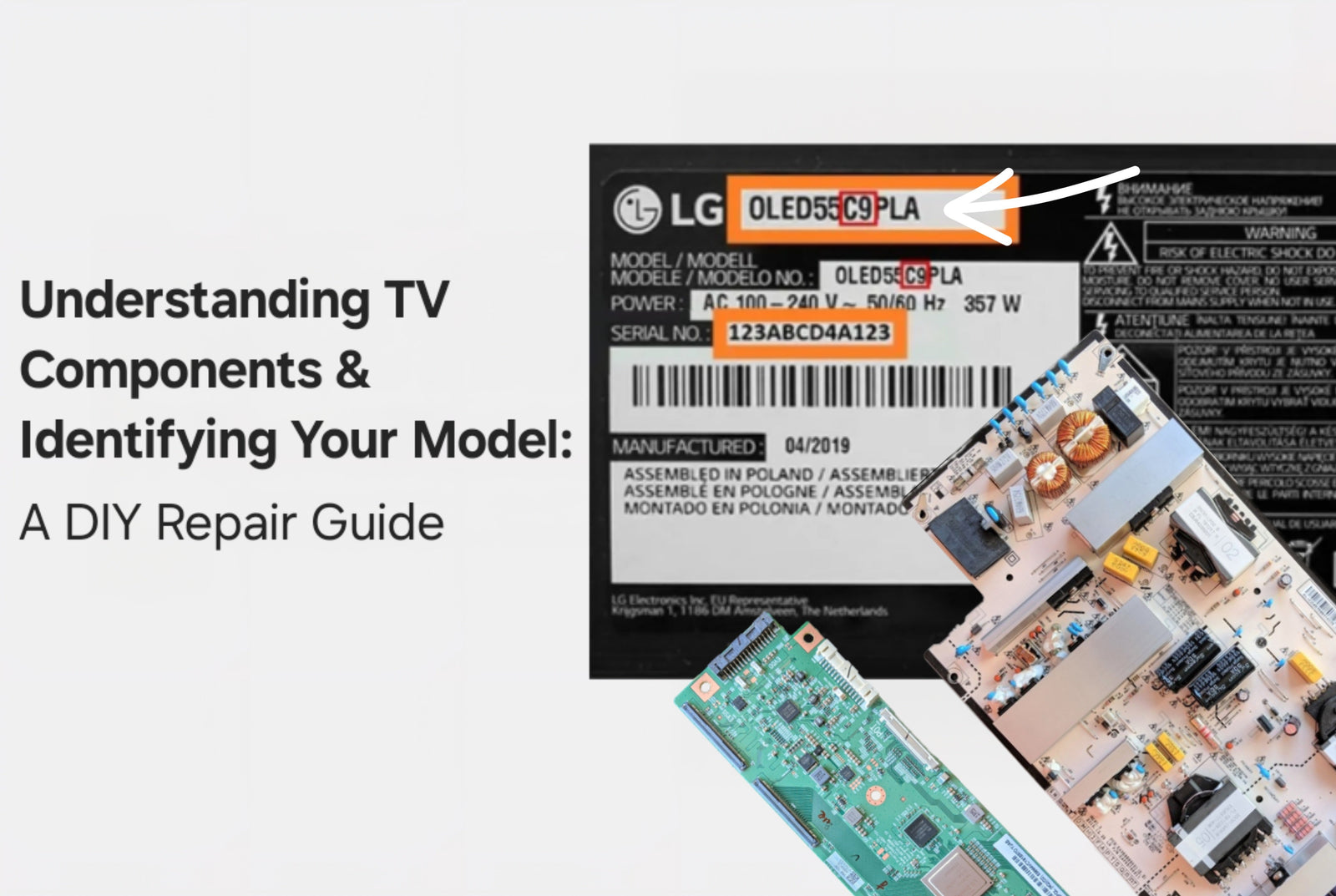Before diving into a DIY TV repair, it's essential to understand what makes your television tick... and most importantly, which parts might need replacing! Step one? Identify your TV model. You can usually find the model number on the back of the TV, in the user manual, or even within the TV's on-screen settings menu. Once you're ready, TVpartsToday is your go-to source for finding compatible, affordable replacement parts, whether you’re searching for Sony, Samsung, or Vizio TV components.
Common culprits behind TV issues include the power supply board, main board, T-Con board, and LED driver. Each plays a vital role in how your TV functions. For example, a malfunctioning power board might stop your TV from turning on altogether, while a faulty LED driver can dim your backlight. Luckily, many of these components can be replaced easily with a screwdriver, patience, and a few minutes of your time.
TVpartsToday Tip: Double-check part numbers and model codes before ordering. A quick photo of the label on the back of your TV can save you major headaches down the road. ALWAYS match the part number exactly to ensure it is compatible with your set!
Would you rather watch a video? Check out our helpful Youtube video on How to Get Started:
Repair or Replace?
If your TV is only a few years old and the issue is isolated, repair is usually your best bet, especially when you shop smart. Replacement parts from TVpartsToday are budget-friendly and often extend your TV’s life by years. However, if your set is ancient or the repair costs rival a new purchase, replacing the set may be the wiser move. Still, many DIYers report saving hundreds with just a single fix!
Where to Buy TV Parts
From Amazon and eBay to direct-from-manufacturer orders, there’s no shortage of options. But for reliability, affordability, and expert support, TVpartsToday stands out with a curated catalog of TV parts for all major brands. Plus, you'll benefit from fast shipping and a support team ready to help you identify the exact part you need. The ONLY television parts supplier with LIVE customer service reps on the phones! No robots here!
TVpartsToday Tip: Shopping local? Call ahead to your electronics store to confirm part availability. And don’t be shy! Local shops might even help with installation tips.
Ensuring Compatibility
Matching model numbers and part codes is non-negotiable when replacing TV parts. A wrong component could damage your TV further, and at the very least, will not work in your set. If in doubt, tap into online repair communities or consult with customer service pros from TVpartsToday, we’re here to help! Email us at info@tvpartstoday.com or give us a call at 930-212-1975!
Budget-Savvy Repairing
Score major deals by timing purchases with Black Friday, Cyber Monday, or end-of-season sales. Consider refurbished parts if they come with a warranty.
TVpartsToday Tip: Subscribe to our newsletter to get exclusive deals, repair tips, and part restock alerts delivered straight to your inbox!
Installation Do’s and Don’ts
Keep your workspace clear, unplug the TV before opening it, and wear a static wrist strap when handling sensitive parts. Avoid forcing parts into place or skipping steps... patience is key! If the repair proves too advanced or involves high-voltage components, it’s okay to call in a pro.
But for most minor and mid-level repairs, DIY is the way to go, and TVpartsToday makes it easier than ever. From identifying your model to sourcing the perfect replacement part, we’ve got you covered.
Need Help?
If you’re still unsure about the issue or need to replace a part, reach out to TVpartsToday. We can help you identify the exact cause of the problem and provide the right replacement part!
Would you rather watch a video? Check out our helpful Troubleshooting 101 playlist over on YouTube!
Would you rather chat with a seasoned repair expert? Head on over to our TVRepairHelp subReddit!
Need help finding the right board or part?
Call us at 930-212-1975 or browse our inventory online.
DIY-friendly parts, fast shipping, and expert support – only at TVpartsToday.

